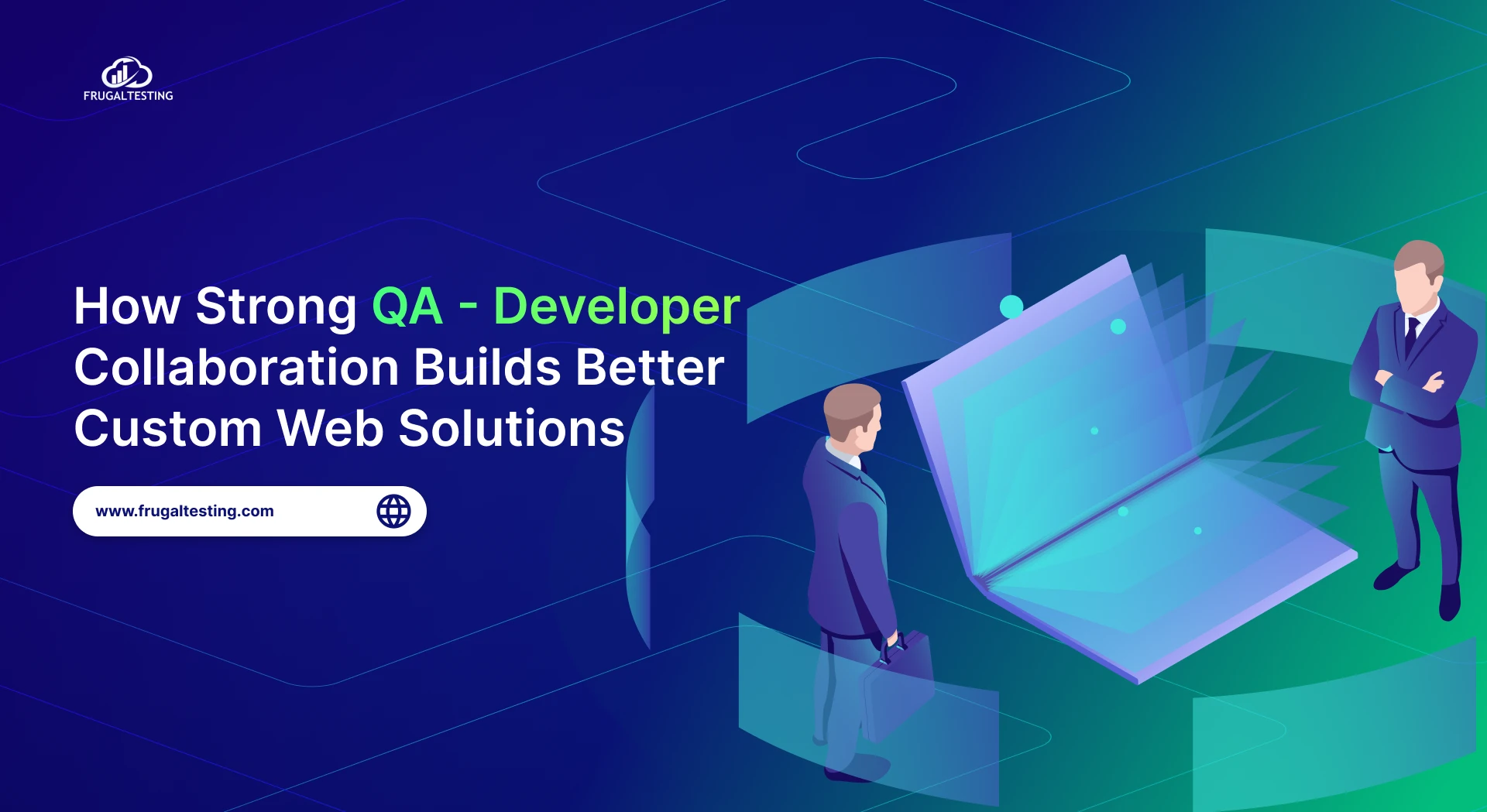Businesses strive to create high-quality software at an unparalleled pace in the quickly changing digital world. With the rise of artificial intelligence in quality assurance (AI in QA automation), the debate between AI-powered testing and traditional testing methods is more relevant than ever. This blog breaks down both approaches, helping you determine which testing strategy aligns best with your business goals.
💡 Here’s what you’ll learn:
📌 How AI software testing lowers test maintenance and increases test coverage.
📌 Key differences between functional and non-functional testing in modern QA.
📌 When to use automated regression testing tools for faster, scalable testing.
📌 Benefits of self-healing test automation in reducing manual script updates.
📌 The role of automated penetration testing tools in identifying security vulnerabilities.
📌 How automated UI testing tools ensure consistent user interface across releases.
Understanding the Evolution of Software Testing
Software testing has evolved from manual processes to complex, automated frameworks. The emergence of AI software testing marks a new phase in this evolution.
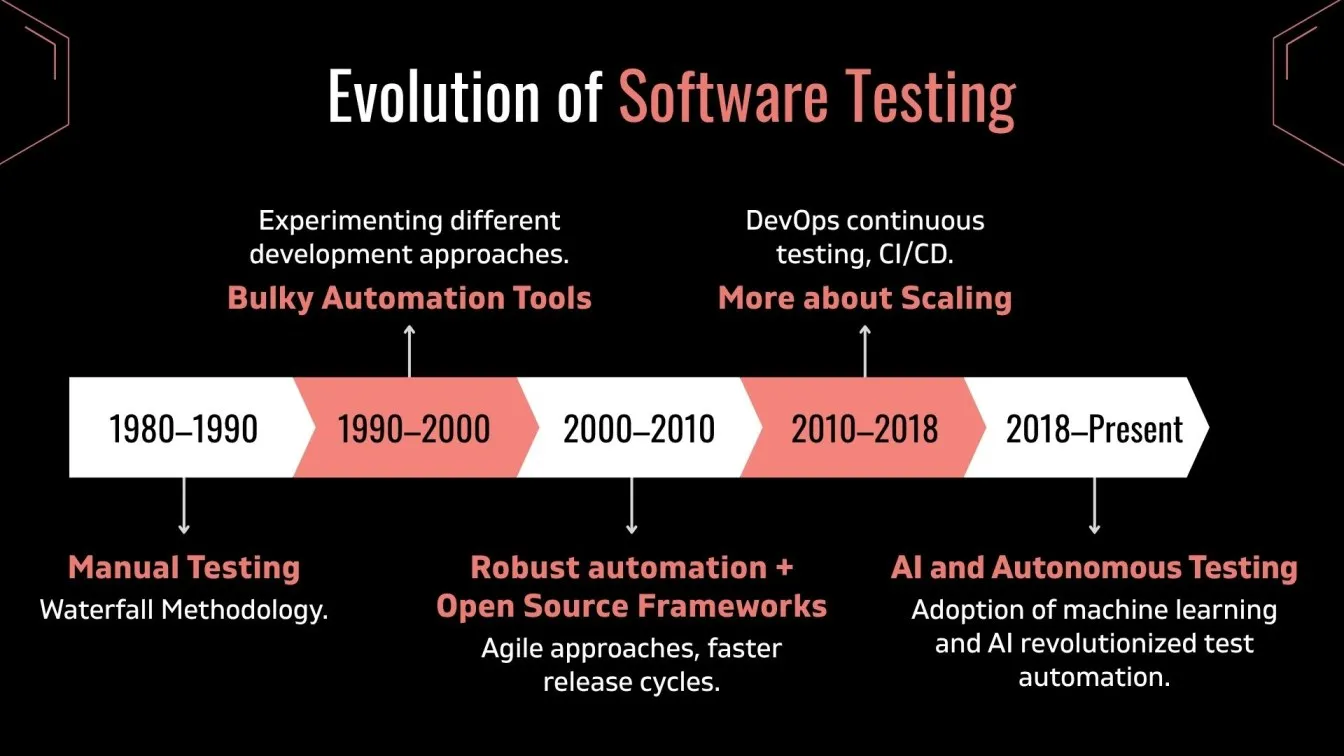
Here’s how software testing has progressed over time:
- Early testing relied on manual testing, where testers executed test cases step-by-step.
- With increased complexity, software automated testing tools were introduced to improve speed and accuracy.
- These days, self-learning algorithms in AI automated testing are transforming the field.
Before diving deeper, it’s important to understand key differences among software testing tools, software testing services, and the methodologies that define modern QA processes.
What Is Traditional Software Testing?
Traditional testing involves manual execution and scripted automation within the Software Testing Life Cycle, emphasizing data-driven decisions and human judgment.
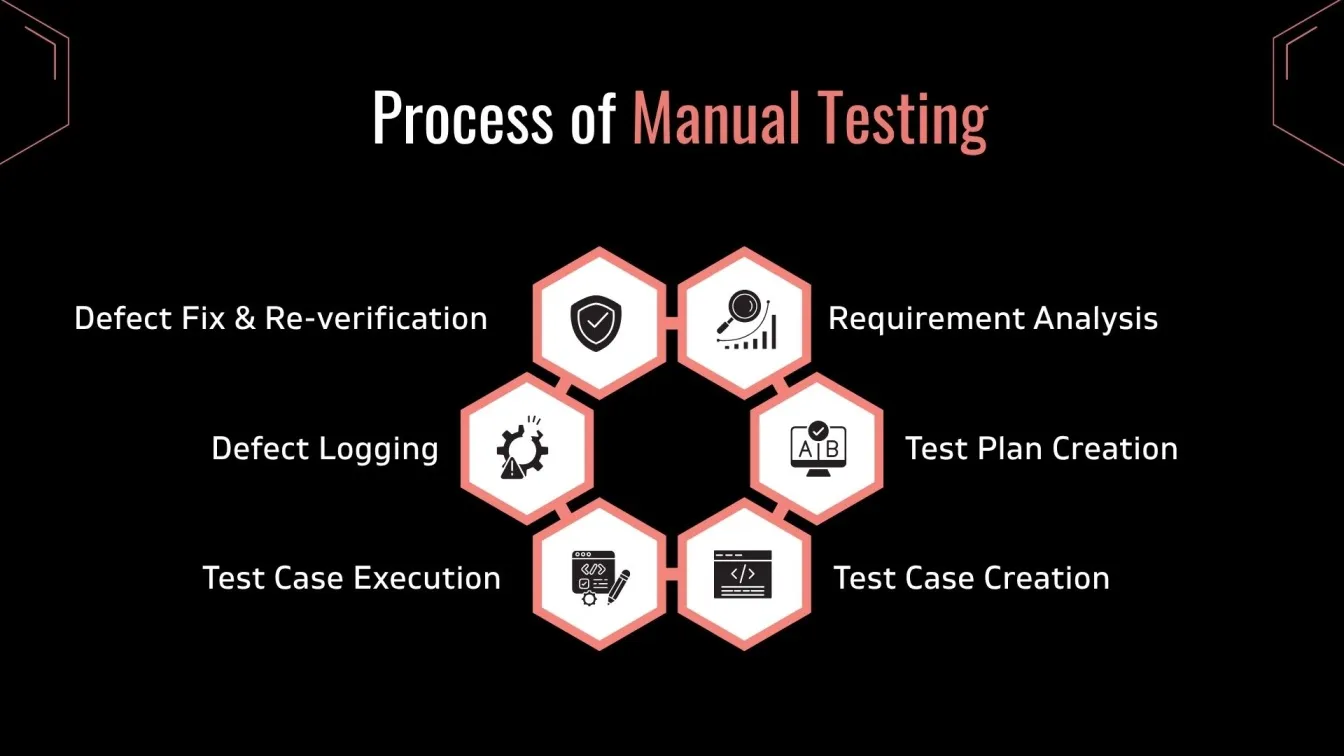
Key points to understand:
- Uses manual testing tools like Selenium and JUnit.
- Carried out by automation testers under the guidance of a QA Architect.
- Depends on manual testing services for functional testing and performance testing.
- Follows open source security testing methodology manual for compliance.
- Includes black-box, white-box, and regression testing.
- Applies risk-based test planning for high-risk areas.
- Validates complex UI design elements.
- Aware of modern tools like Testim Automate and DOM-based selectors.
- Reduced dependence on expert systems, DigitalOcean GPU Droplets, or predictive defect detection.
Traditional testing remains essential for tasks requiring human insight and usability validation.
What Is AI-Powered Testing?
AI-powered testing uses machine learning and intelligent algorithms to optimize QA processes. From predicting defects to self-healing test scripts, it offers a futuristic approach to testing.
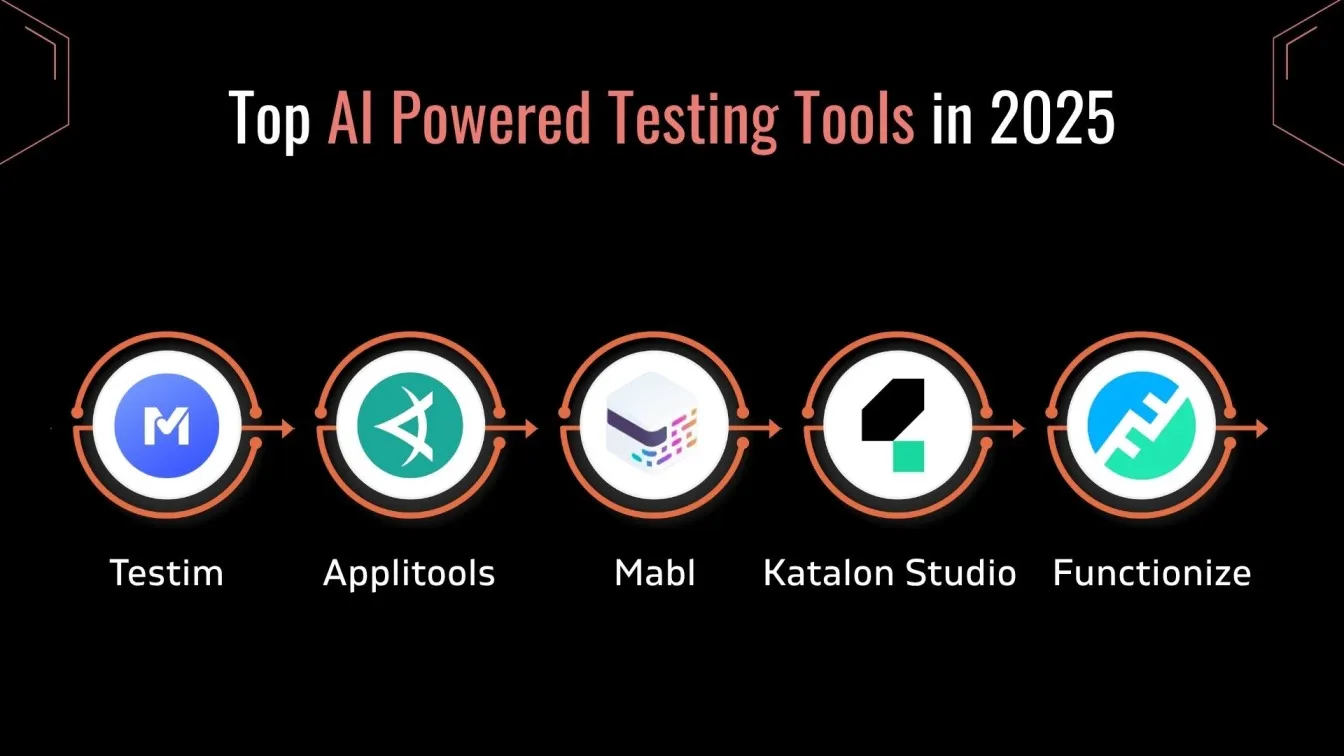
Core features include:
- AI test automation that adapts to UI changes in real time.
- AI in testing enables smarter prioritization of test cases.
- Utilizes AI software testing tools for dynamic data generation and analysis.
- Supports generative AI testing tools that create scripts automatically.
- Employs open source AI testing tools for flexible, low-cost integration.
AI-powered testing reduces test maintenance, accelerates test cycles, and delivers high ROI in agile environments.
Key Differences Between AI Testing and Traditional Testing
AI testing leverages machine learning for faster, adaptive test execution, while traditional testing relies on manual or scripted methods. Understanding how these methods differ is essential for making an informed decision.
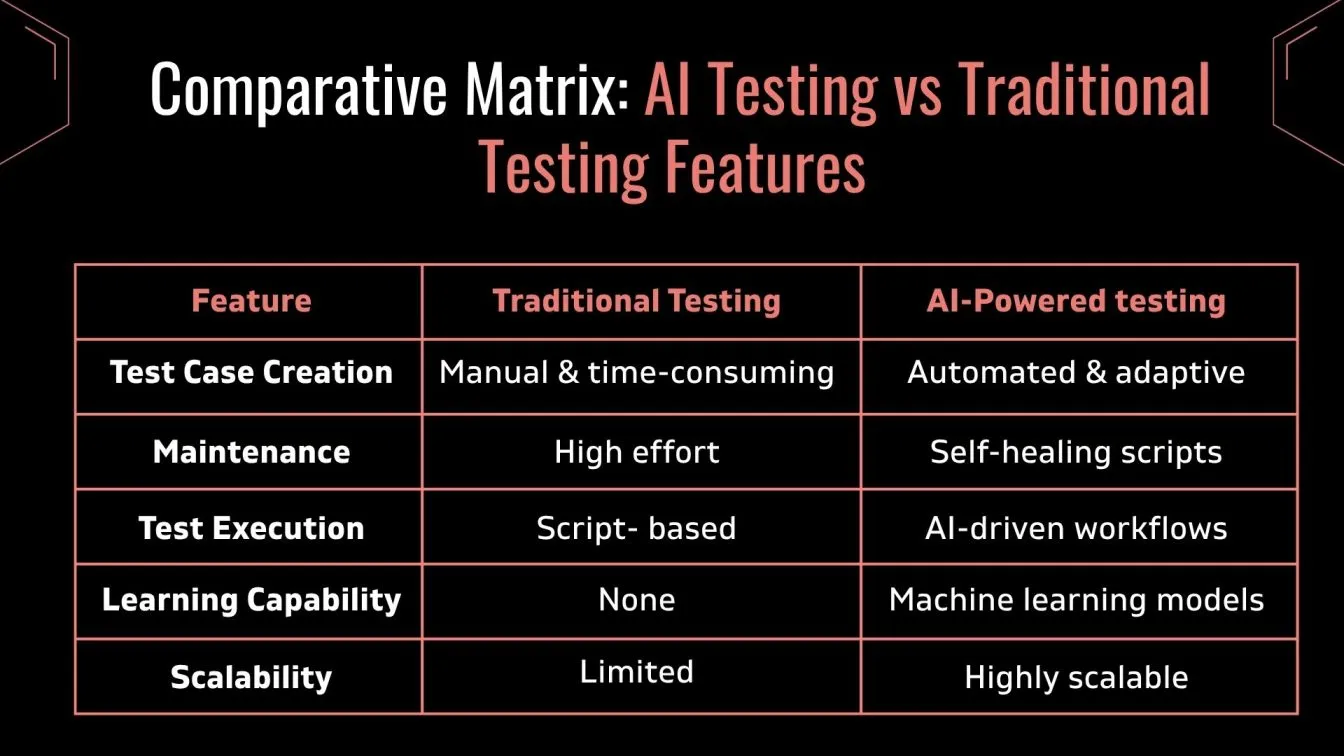
AI and traditional testing can complement each other in hybrid frameworks for balanced quality assurance. Choosing the best fit depends on your team's goals, tech stack, release frequency, and test complexity.
Pros and Cons of Traditional Testing
Traditional software testing offers precision and control, especially for usability, compliance, and exploratory testing tasks. It remains vital in QA strategies where human intuition, UI validation, and manual verification are irreplaceable.
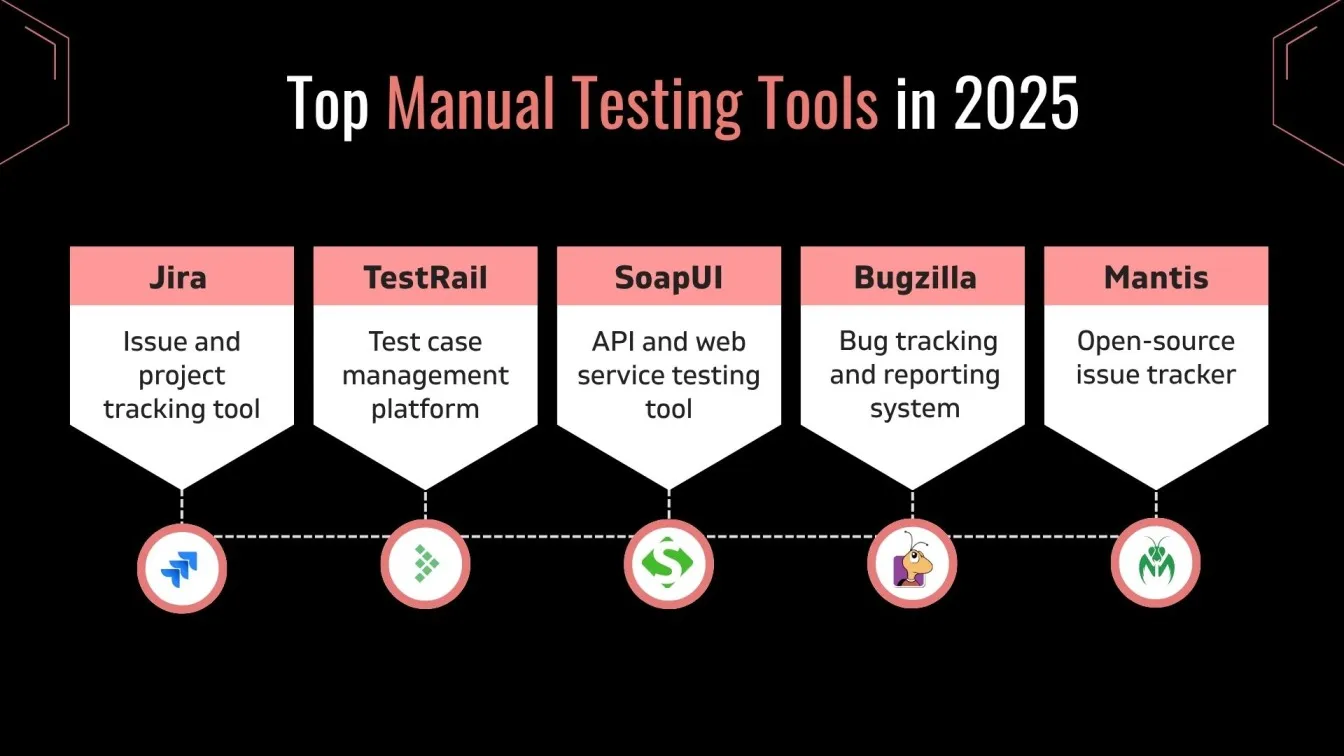
Let’s look at the strengths and limitations of traditional software testing:
Despite its benefits, manual testing can be time-consuming and hard to scale in fast-paced CI/CD pipelines. Balancing manual efforts with automation ensures higher test coverage and more efficient QA processes.
Pros and Cons of AI-Powered Testing
AI-powered testing improves test efficiency, accuracy, and scalability in agile and DevOps environments. It leverages machine learning to optimize test execution, defect prediction, and test script maintenance.
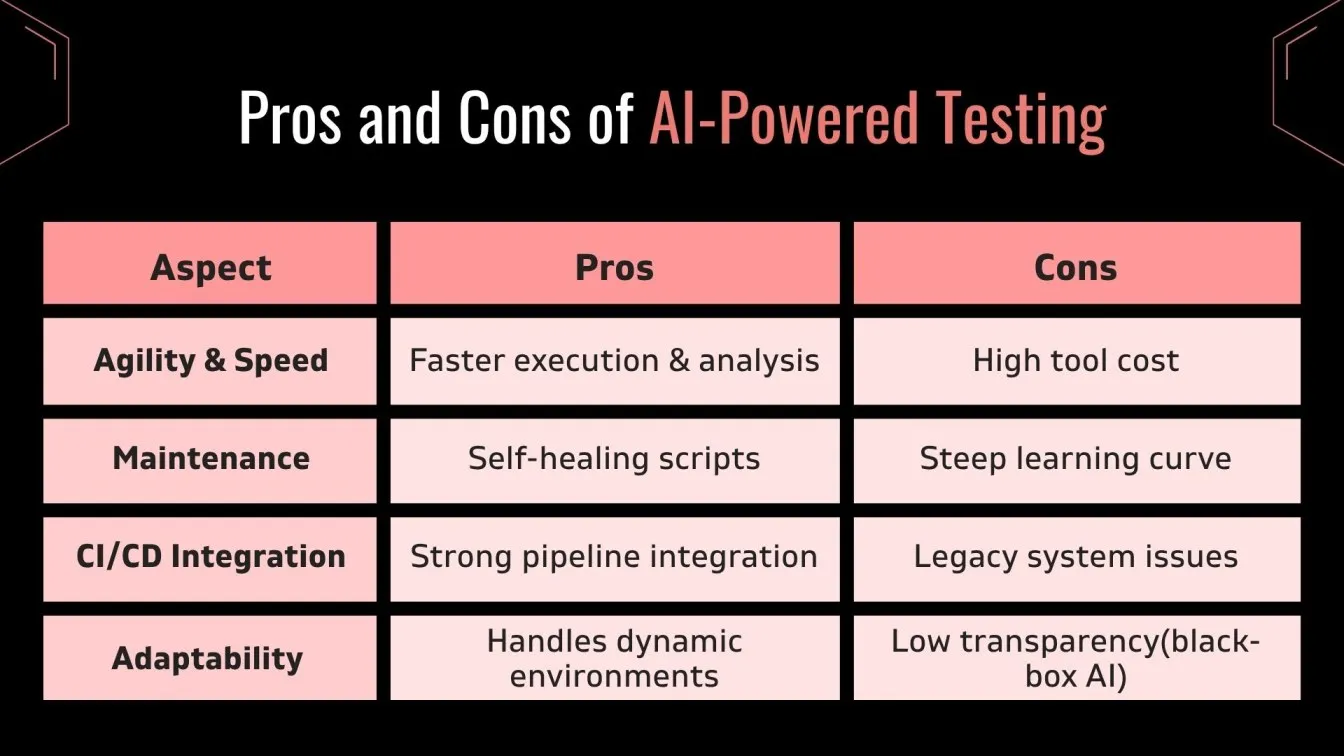
While AI testing offers speed and intelligent automation, it demands skilled resources and setup effort. Balancing AI tools with human oversight ensures reliable, transparent, and high-performing QA workflows.
How AI Enhances Test Case Generation and Maintenance
AI in software testing automates test case generation using real-time user behavior and predictive analytics. It streamlines test maintenance by reducing duplication, identifying risks, and adapting to UI changes efficiently.
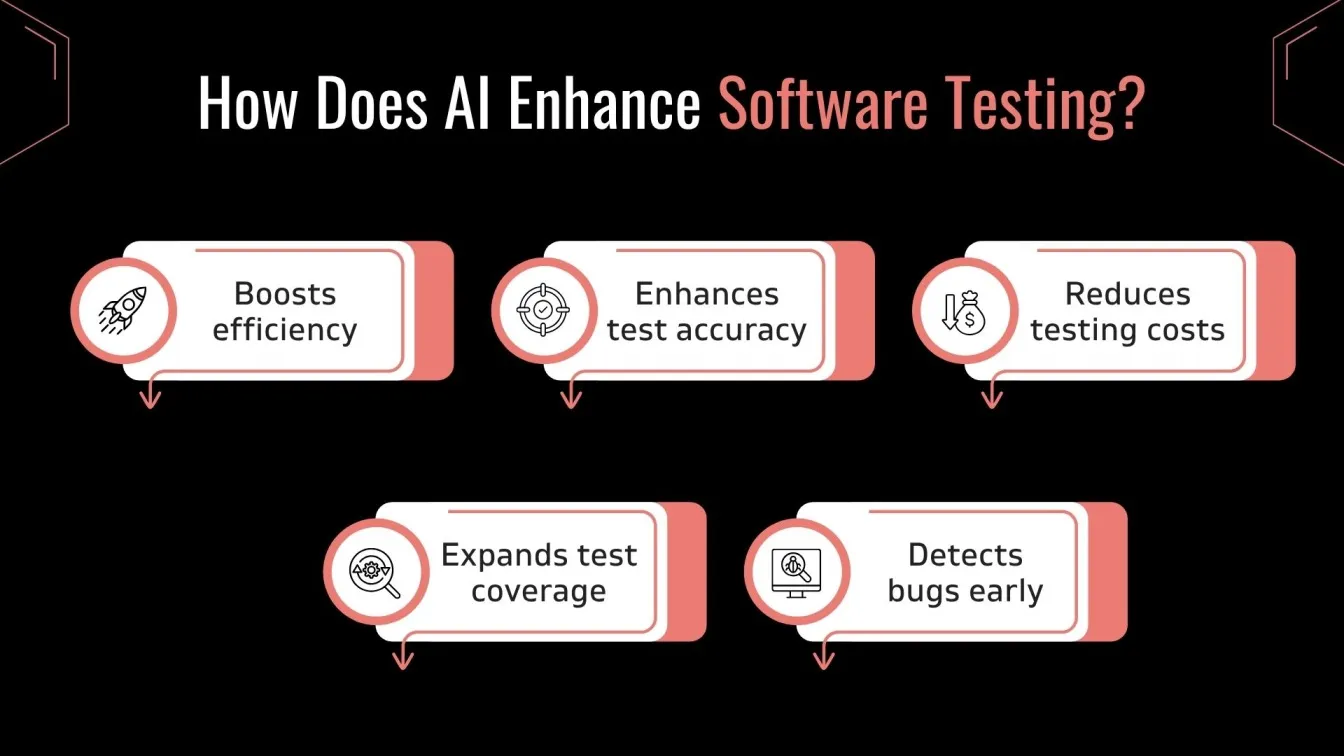
Here's how AI-powered testing tools and AI-driven testing streamline the process:
- AI software testing auto-generates test scenarios and test cases based on real-time user behavior.
- Reduces manual effort by mapping user flows and leveraging test automation tools.
- Finds problematic tests, increases the accuracy of test findings, and handles test data better.
- Enables predictive analytics to detect high-risk test areas before execution.
- Incorporates visual testing to verify UI modifications and identify discrepancies.
- Supports exploratory testing with intelligent guidance and risk prediction.
- Top AI automation testing tools offer versioning, defect prediction, and rapid adaptation for continuous delivery pipelines.
AI in testing software improves productivity, scalability, and precision across QA efforts.
Test Execution Speed and Accuracy: AI vs Traditional
AI-powered testing significantly boosts execution speed, offering faster feedback and greater test coverage across platforms. Unlike traditional testing, AI handles parallel runs and dynamic UI changes, enhancing overall QA accuracy and efficiency.
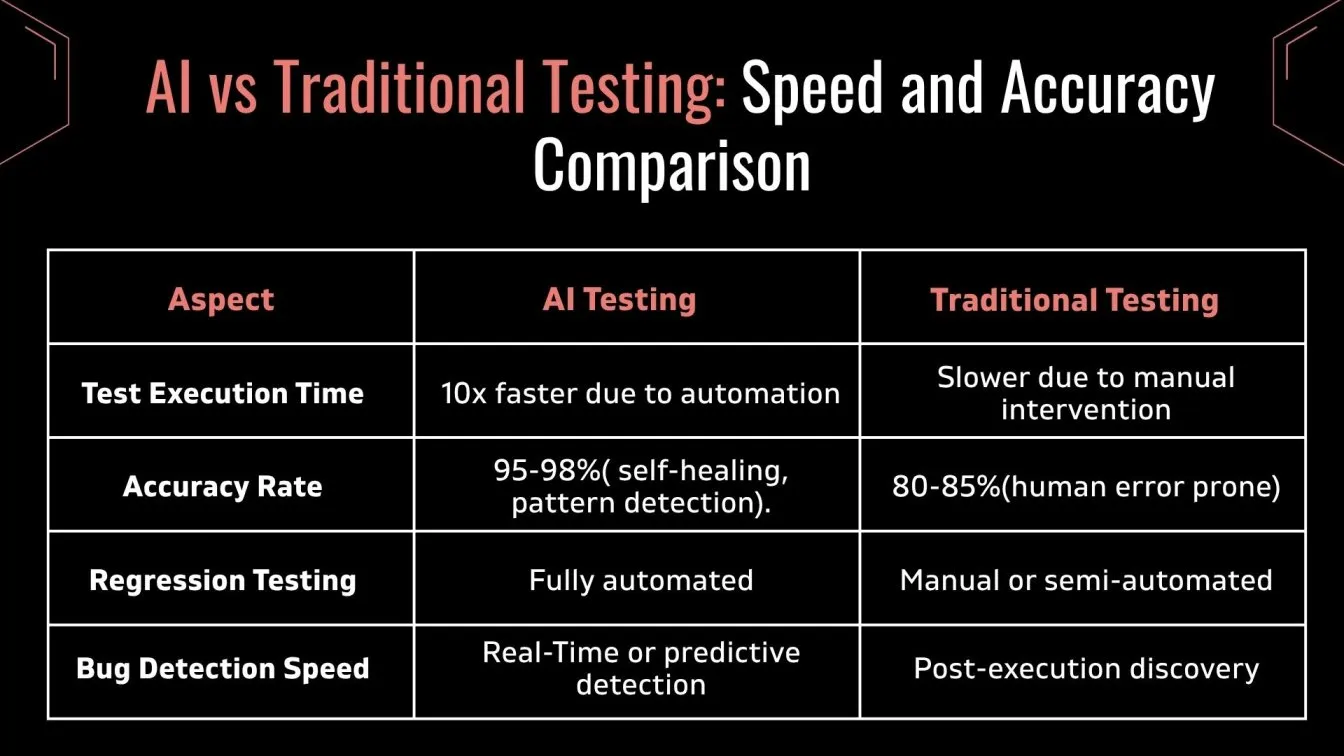
Here's how AI testing and traditional methods compare:
- AI-powered testing tools execute test suites up to 10x faster, increasing overall test automation efficiency.
- Detects failures earlier in the CI/CD pipeline, improving test results accuracy.
- Enhances test coverage and maintains consistent test data flow across platforms.
- Traditional testing relies on manual effort, slowing down test execution and impacting scalability.
- AI enables parallel, cross-browser, and multi-platform testing for diverse test scenarios.
- Automatically updates test scripts for consistent output in regression cycles.
- Leverages Artificial Intelligence to optimize test selection, prioritization, and maintenance.
- Provides faster feedback loops, improving user experience and overall product quality.
- Seamlessly integrates with test automation tools to maximize performance.
AI in test execution ensures smarter, faster decisions while reducing errors and increasing ROI in modern QA pipelines.
Best Use Cases for Traditional Testing
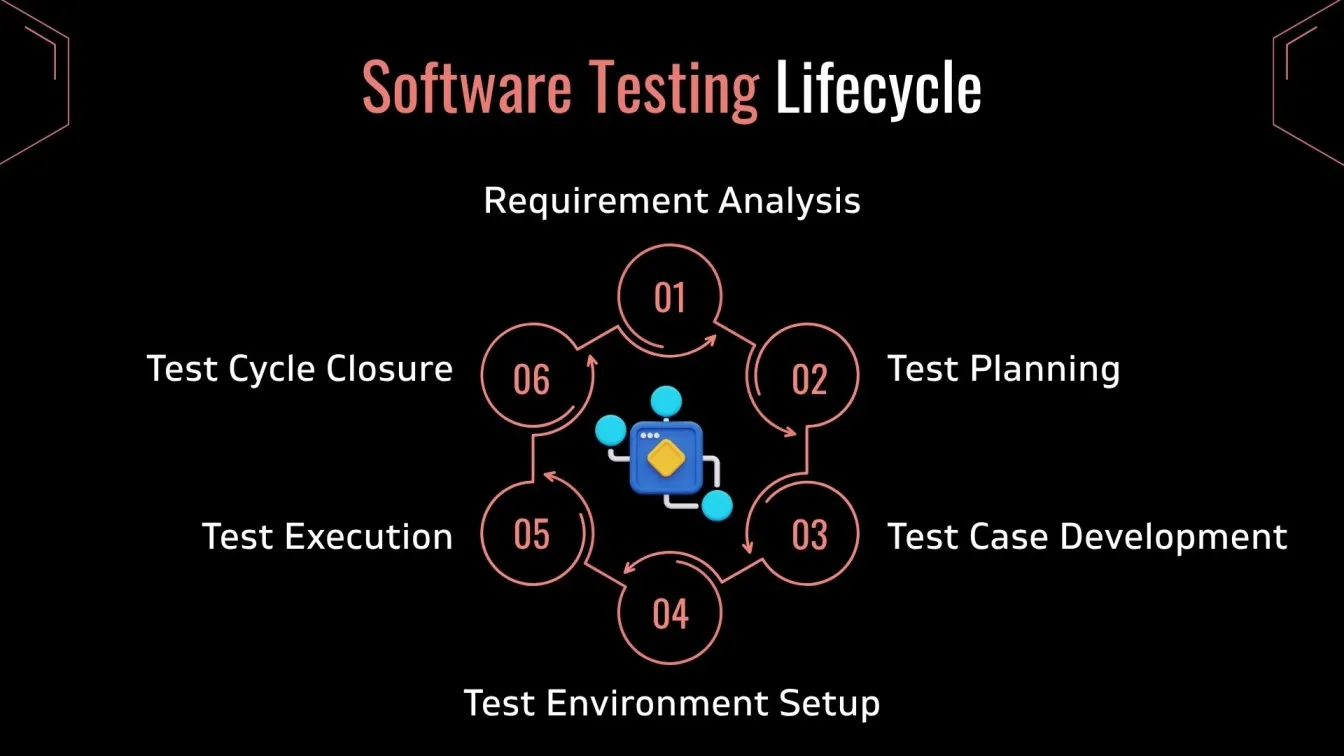
Manual testing excels in usability checks, A/B testing, and legacy system validation where AI-driven automation cannot replicate human empathy and judgment.
Best Use Cases for AI-Powered Testing
AI-powered testing delivers exceptional value in fast-paced development environments by enabling continuous testing and rapid feedback. It is ideal for complex applications requiring scalable, adaptive test automation.
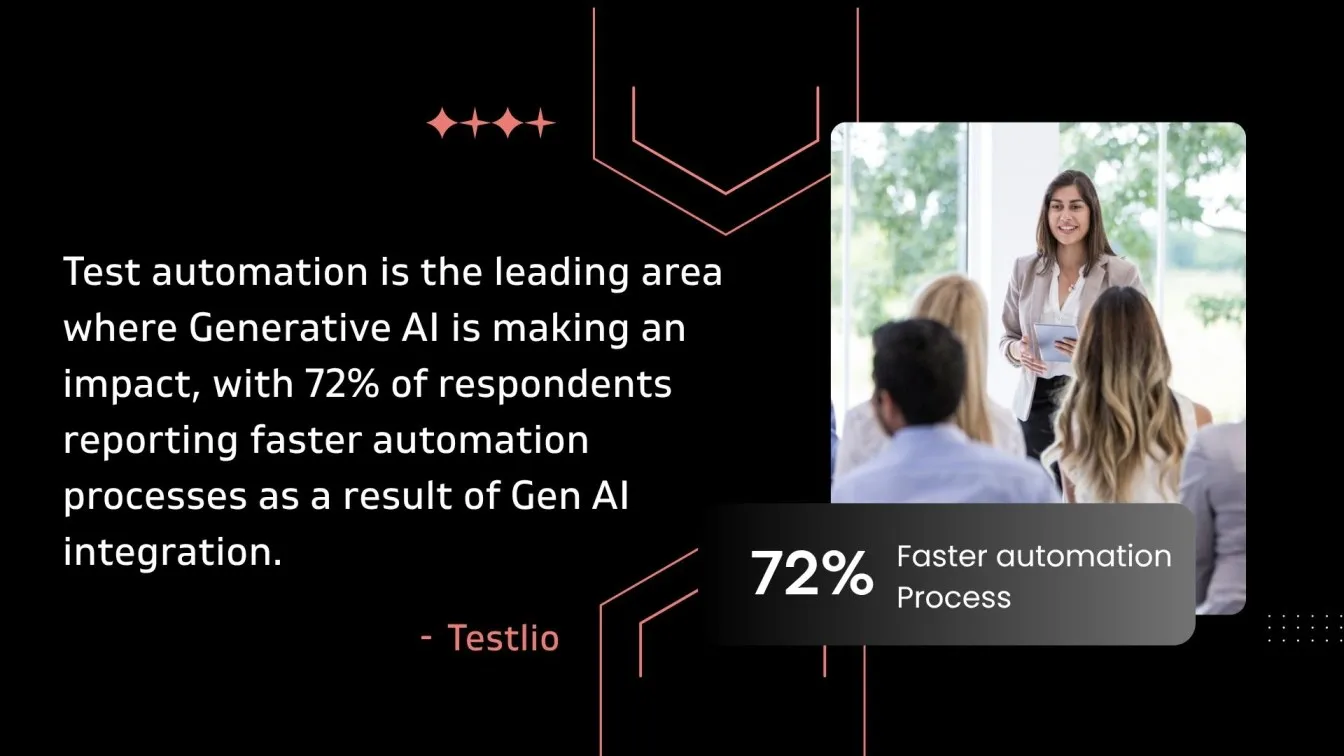
AI testing shines in supporting cloud-native platforms, cross-browser compatibility, and predictive analytics to optimize test efficiency and coverage across diverse environments.
Cost and ROI Comparison Between AI and Traditional Testing
Comparing AI-powered and traditional testing requires careful evaluation of upfront costs against long-term benefits like efficiency and scalability. Understanding ROI helps businesses invest wisely in tools that accelerate delivery while reducing errors.
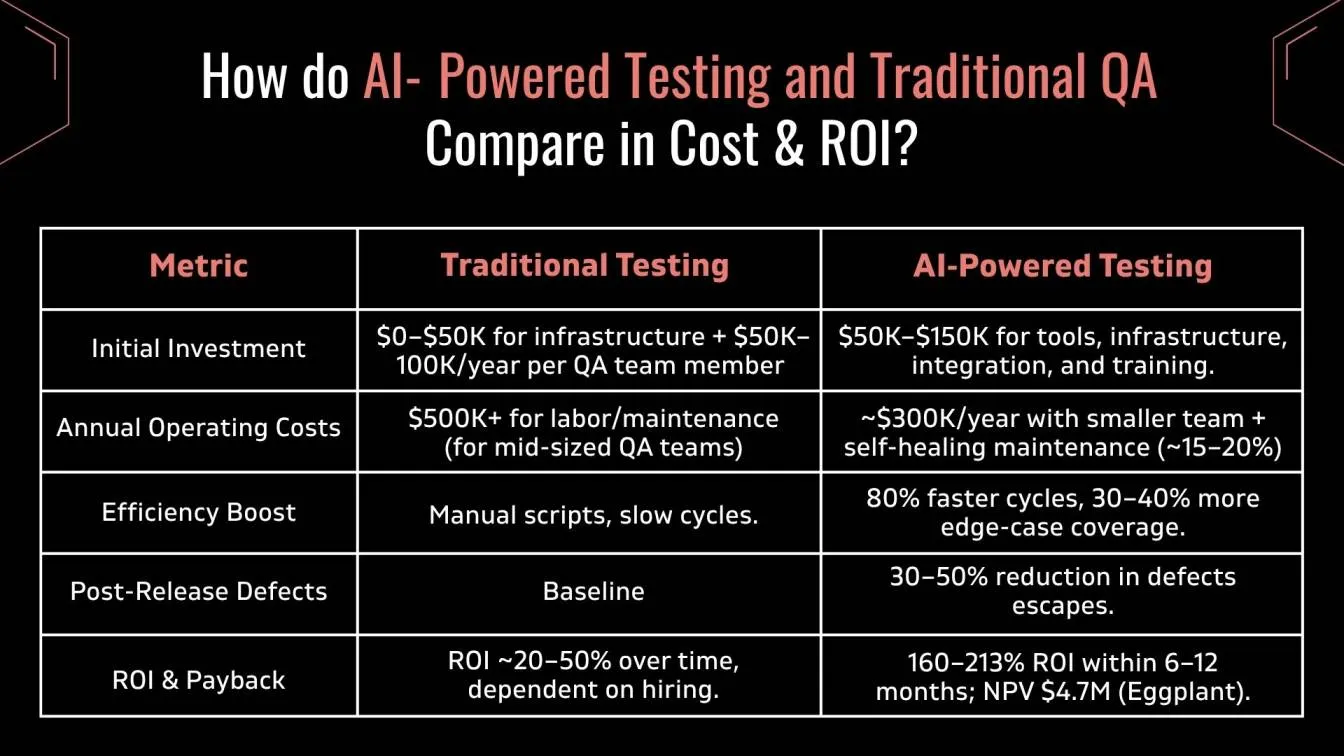
Evaluating cost-effectiveness is key when deciding between AI testing and traditional methods.
- Purchasing AI-driven test automation tools upfront is necessary for testing AI.
- Artificial intelligence enhances test coverage and speeds up test execution.
- Test case prioritization and test data production are enhanced by predictive analytics.
- Continuous testing with AI reduces manual effort and accelerates delivery.
- Traditional testing has lower short-term costs but scales poorly with complex test data.
- AI-powered tools minimize time-to-market, boosting overall ROI.
- Test automation tools driven by AI offer better efficiency and long-term cost savings.
Choosing AI testing leads to greater ROI from AI testing through improved efficiency and comprehensive test coverage.
Evolving QA Roles in the Age of AI
AI is redefining the role of QA engineers from manual testers to strategic contributors in the software development lifecycle.
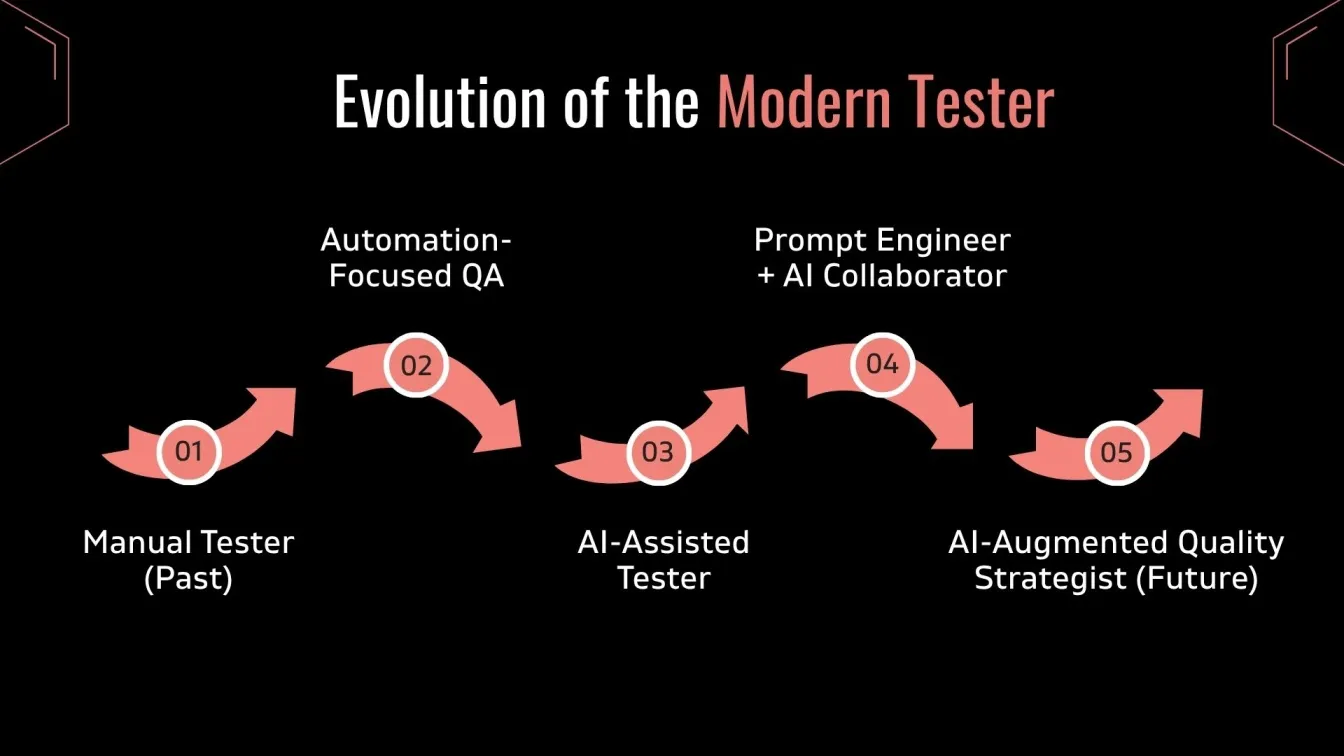
QA professionals are now expected to:
- Design AI-driven automation frameworks for scalable, intelligent testing.
- Analyze AI-generated test results to improve test accuracy and reliability.
- Ensure ethical AI testing practices by validating fairness, bias, and compliance.
- Collaborate across Dev, QA, and Ops teams in CI/CD and DevSecOps pipelines.
- Lead continuous testing initiatives to support faster, high-quality releases.
To stay competitive, QA teams must upskill in areas like test automation, API testing, test data generation, and AI model behavior. Embracing these evolving responsibilities enables QA to enhance software quality, accelerate time-to-market, and support robust digital transformation.
Choosing the Right Testing Approach for Your Business
Selecting the right testing strategy requires evaluating your project’s complexity, team skills, and budget to align with business goals. Balancing AI-powered and traditional testing approaches ensures optimal software quality and delivery speed.
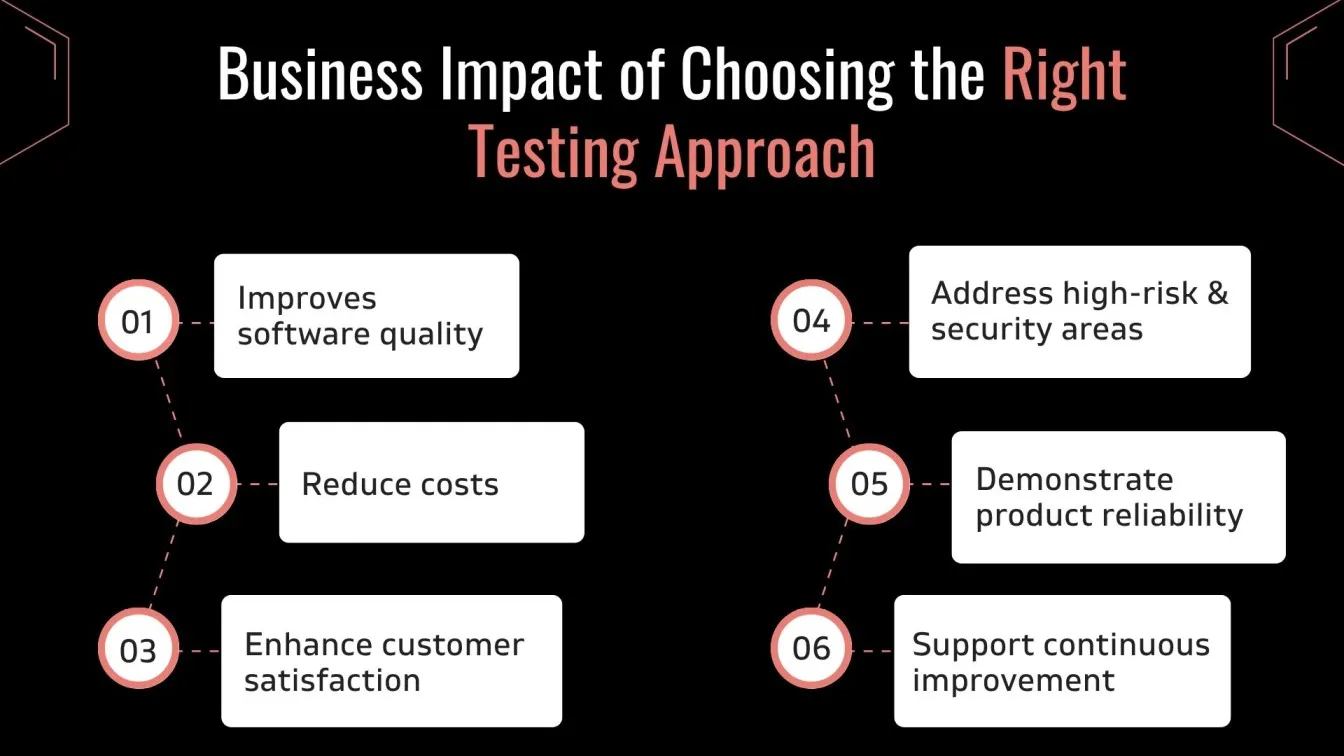
Selecting the ideal testing approach involves balancing business needs and technical factors.
- Consider project complexity and frequency of updates for effective test management.
- Assess available budget and QA professionals’ skills sets in AI software testing and manual methods.
- Ensure compatibility with current test environments and integration capabilities.
- Prioritize speed, scalability, and accuracy to meet agile development goals.
- Focus on covering high-risk areas, security vulnerabilities, and edge case testing.
- Evaluate the need for frequent regression tests versus extensive test writing efforts.
- Adopt self-healing software test automation services to reduce test maintenance and improve efficiency.
- Factor in requirements for performance testing under load or peak usage conditions.
- Leverage machine learning techniques and data analysis to enhance AI in software testing.
- Often, a hybrid approach combining AI-driven and manual testing delivers optimal results.
Choosing the right mix ensures robust test management and reliable software releases.
Conclusion: Finding the Balance Between AI and Traditional Testing
AI-powered testing enhances the software testing process by improving test coverage, enabling faster test case generation, and supporting self-healing tests through machine learning. Yet, traditional testing remains crucial for test planning, user experience, and validating UI elements with human oversight.
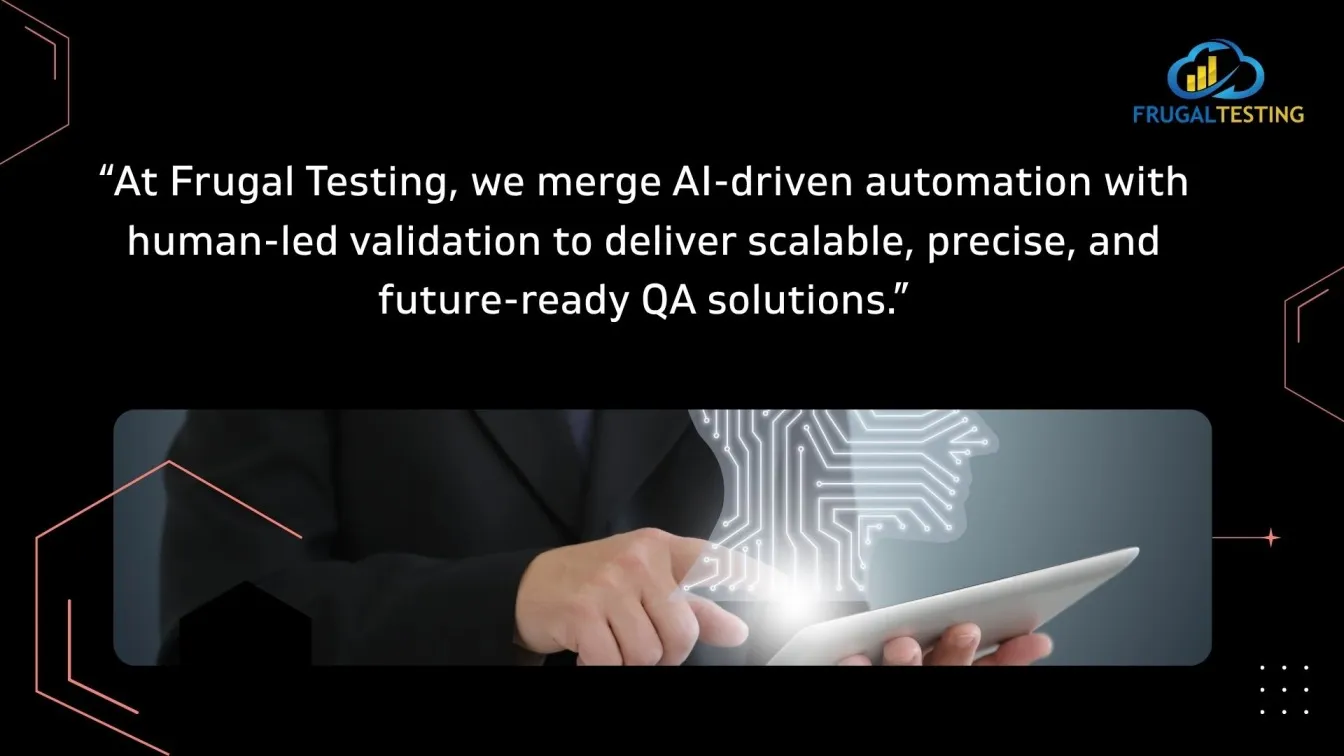
Technologies like generative AI, computer vision, and natural language processing enable smarter test automation and visual regression testing. However, regression testing, cross-browser testing, and manual validation still play a key role in ensuring software quality during frequent releases.
A balanced approach using software test automation frameworks and self-healing automation, combined with human judgment, ensures scalable, efficient QA aligned with software development goals.
People Also Ask
👉 What skills are required to implement AI-powered testing effectively?
AI-powered testing requires skills in machine learning, test automation frameworks, data analysis, and CI/CD tools. These are essential for building intelligent, scalable, and reliable automated test suites.
👉 Can small or mid-sized businesses afford AI-powered testing solutions?
Yes, AI testing tools now offer affordable, scalable pricing plans ideal for SMBs and startups.
They enable cost-effective adoption of intelligent test automation.
👉 Is AI testing reliable for non-functional testing like performance or security?
AI testing enhances non-functional testing by identifying performance bottlenecks and security risks faster. It improves reliability in load testing, stress testing, and vulnerability assessment.
👉 Can AI-powered testing improve test case maintenance?
Yes, AI simplifies test case maintenance by auto-healing test scripts during UI or code changes.
This reduces manual effort and improves long-term automation stability.
👉 Is domain knowledge important when using AI in testing?
Absolutely, domain expertise helps AI testing tools generate accurate, business-relevant test scenarios. It improves the effectiveness of intelligent test automation strategies.
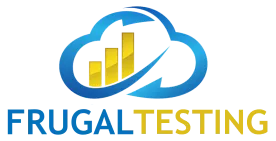


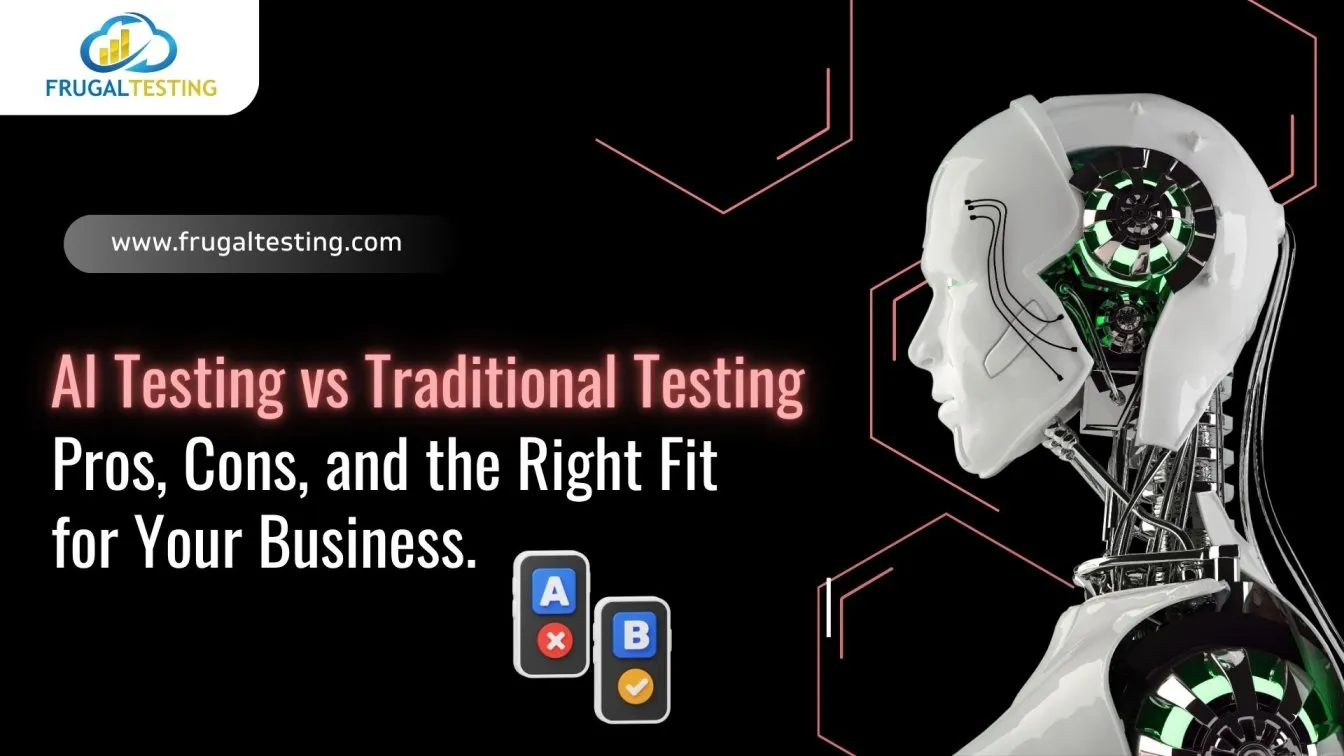
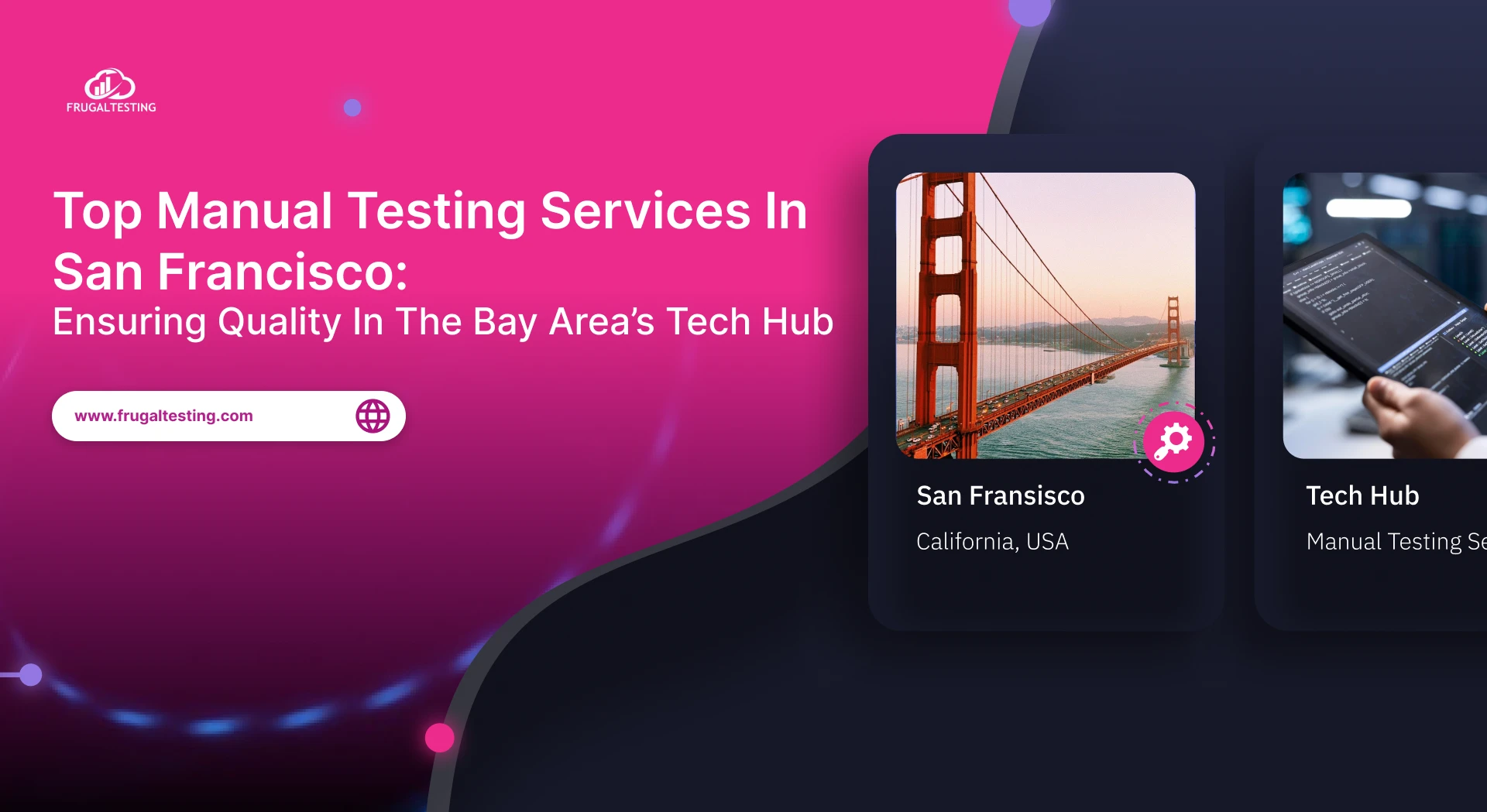
%201.webp)
